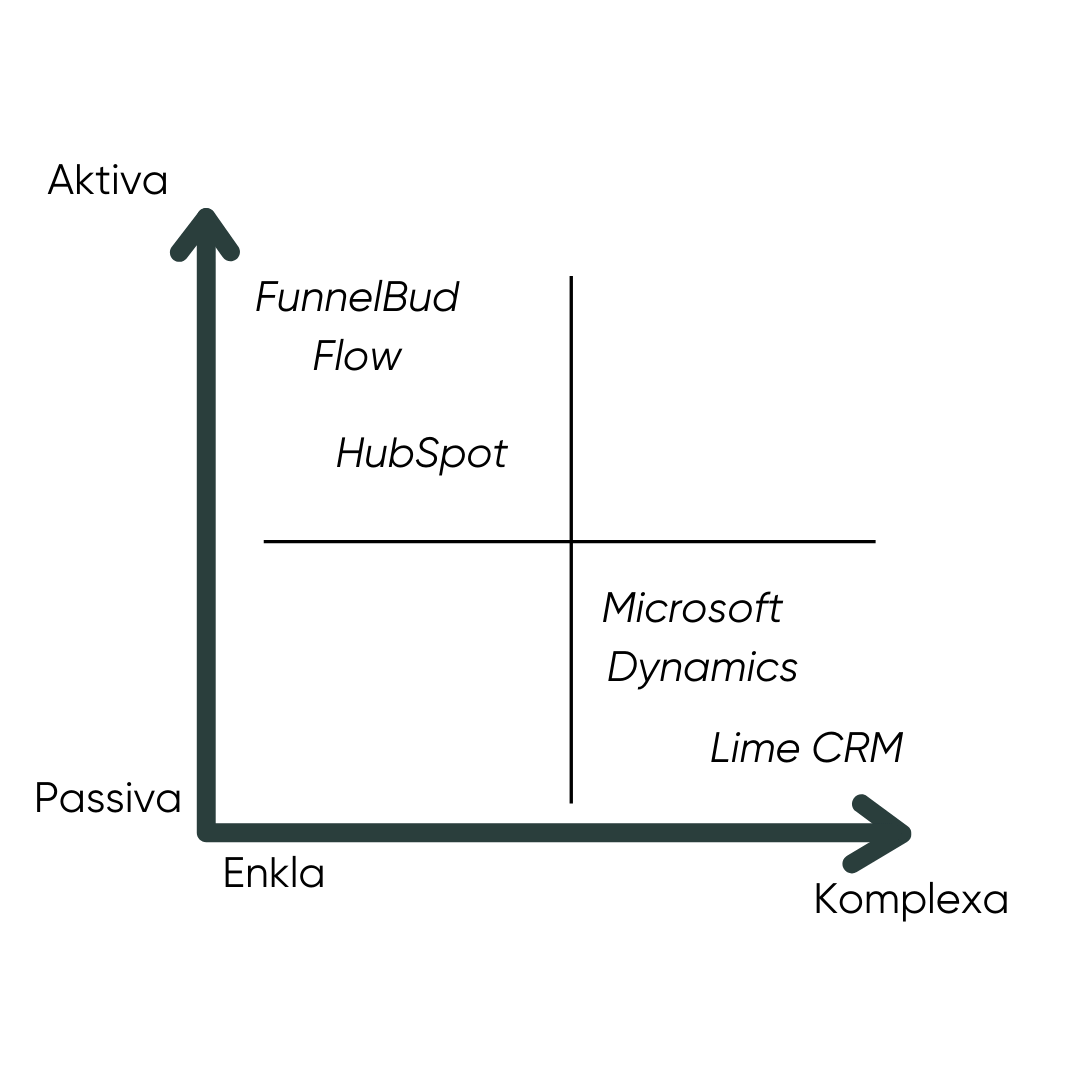There are plenty of CRM systems on the market, but beyond the most common features that all systems have, such as a sales board, business and contact database, it can be difficult to know which one to choose. Some are priced based on modules, others have ready-made packages to choose from.
So how do you navigate that jungle? In this article, we look at the two most common types of CRM and how to think when researching different options.
We will start from the following matrix:

Complex vs Simple
CRMs can be complex or simple. This does not mean that they are by definition harder or easier to work with, but rather it is about their functionality beyond the standard CRM functions.
Simple CRM systems have standard modules such as contacts, sales boards and deals and focus all their functionality on CRM.
Complex CRM systems are modular and you can add and customize your system with, for example, case management, invoicing and project management.
Complex CRMs are usually more expensive and have a much longer start-up time to "stitch together" the different modules of the system to suit your work process. It also takes longer to learn the system because there is much more functionality than in a simple CRM.
Simpler CRMs have a lower price tag and it is usually easy for the sales team to get started and get results quickly.
Microsoft Dynamics and Lime CRM are two examples of complex CRM systems while FunnelBud Flow is a simple system.
Liabilities vs Assets
The next category is about how much the CRM can help you in your everyday life.
Passive CRM serves as a database where you can store information about your customers, but it doesn't provide much more than that. There are no automations or other tools to facilitate your daily work.
Active CRMs, on the other hand, collect more information about your customers and automate many of your tasks, including the sales process and communication with your customers. They also often have built-in marketing features, ranging from simple newsletters to more advanced features such as social media managers or customer surveys.
HubSpot and FunnelBud Flow are two examples of active CRM systems.
Which one should you choose?
The type of CRM system you should choose depends of course on your specific needs, but in general, Active and Simple CRM systems are suitable for smaller companies that do not have the resources for a long start-up period or complex needs or work processes.
Active systems are also often easier for smaller teams to work in because marketing and sales can work in the same system.
Larger companies or Enterprise companies with several different departments, specific needs and the resources required to implement a complex CRM will often get very good results from, for example, Lime CRM or Microsoft Dynamics.

